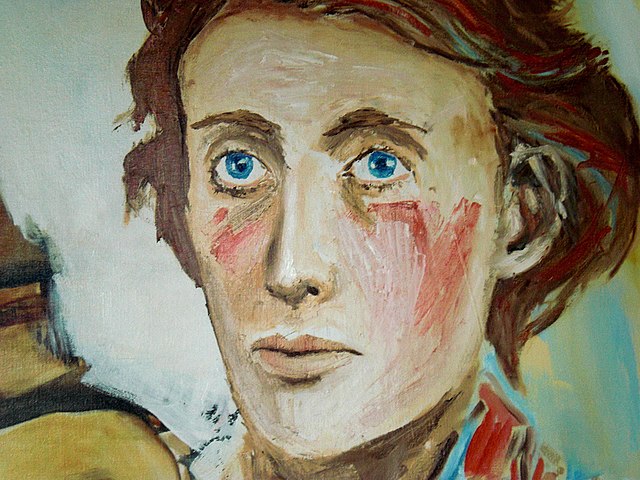Writing on mental illness: why Virginia Woolf inspires me
This article deals with themes of suicide, suicidal ideation, bipolar, anorexia and family death
In Mrs Dalloway, published just under a century ago, Virginia Woolf famously wrote how “the world wavered and quivered and threatened to burst into flames”. Today, 98 years later, anyone who has struggled with mental illness (particularly anxiety or PTSD) can recognise their perception of the world in this metaphor. Woolf, plagued by a “nervous disorder” throughout her life until she committed suicide at age 59, understood what it meant to live in the throes of “madness” and her struggle was a central theme of her written works — both factual and fictional. To mark the end of Mental Health Awareness Week, I’ll be reflecting on this monumental author and the uphill battle (against illness, tragedy, and society) she fought throughout her life.
Academics and biographers have speculated on what mental illnesses Woolf might have been diagnosed with if she was still alive today. It’s widely agreed she had bipolar disorder, her life being divided into periods of paralysing depression and extreme mania, often accompanied by psychotic episodes. Insomnia, grief, and suicide ideation had all become mundane by the time Woolf reached adulthood. Her biographical essay On Being Ill reflects on how these symptoms have caused her to perceive the world differently, (demonstrated in the surreal nature of her novels), and tenderly reveals the terrible loneliness of lifelong sickness.
Writing wasn’t just an escape from the mental pain Woolf experienced, it also made it possible to process her difficulties. By transforming what she had witnessed into words, Woolf wrote she was able to strip them of the power they had to hurt her.
While Woolf is constantly drawn to death — making several suicide attempts during her lifetime — she is also terrified by her knowledge of it, having lost her most beloved family members as a young girl.
The release of death she idolised (her protagonist is comfortably “curled up at the bottom of the sea” following her death in The Voyage Out) and the devastating grief with which she lived (we remain with her raw, aching husband) are in constant conflict throughout her books. While Woolf is constantly drawn to death — making several suicide attempts during her lifetime — she is also terrified by her knowledge of it, having lost her most beloved family members as a young girl.
Mrs Dalloway translates the ebbs and flows of the human mind, moving between past, present, and future in a way that conflates them, and weaves together a narrative that follows a stream of consciousness. The structure of her novels was revolutionary for English literature, breaking traditional formulas, and drew on Woolf’s own perception of the world. Rhetorically, Woolf argues against the traditional style of novels written at the time: “Is life like this?”
Her writing style often reflects the hypomanic state she wrote in, a state which causes enhanced vocabulary, inventiveness, and the ability for sustained concentration. Author Marya Hornbacher reflects on the mania of bipolar in her biography, Madness: “I can’t say no, I can’t slow down, I have to keep going or they’ll find out I’m… a fraud”. This urgency to write, or risk falling apart again, is evident behind the writing of both authors.
Her repulsion towards eating, as well as her body’s desperate, biological urges to rebel against her, is obvious in this characterisation of hunger.
A descendant of Woolf has also highlighted her reoccurring bouts of anorexia, documented by her husband: he wrote during one of her breakdowns that “the most difficult and distressing problem was to get Virginia to eat”. Emma Woolf, who published a memoir about her own life with anorexia, said she experienced a “painful moment of recognition” when looking at photographs and writing from her great aunt. Food and consumption crop up repeatedly in Virginia Woolf’s writing, seen with the disgusting beast inside of every man who “gobbles and belches… jibs if I keep him waiting” in The Waves. Her repulsion towards eating, as well as her body’s desperate, biological urges to rebel against her, is obvious in this characterisation of hunger.
In addition to being institutionalised, Woolf was repeatedly prescribed a “rest cure” by her doctor, consisting of a strictly enforced regime of six to eight weeks of bed rest and isolation, without any creative stimulation. As woman whose two greatest loves were to walk and to write, the treatment drove her to frustration every time she underwent it. Her writing strains against the metaphorical corset, criticising how women were restricted by patriarchal society and how Woolf was restricted personally by the men who cared for her. Popularity in her novels was revived during second-wave feminism in the 1960s, examining and analysing Woolf’s writing from a feminist perspective.
Although Woolf was hounded by illness throughout her life, she was able to produce some of the greatest novels and most insightful personal essays ever written. Her legacy has resulted in her becoming a figurehead of both feminist literature and those musing on mental health, in addition to facilitating more interest in her personal life than any other writer. While I don’t agree with the idea that mental anguish is a necessary tool for creatives, it can’t be denied that Woolf’s struggles formed the core of her work and they would be very different if she had lived a happy, carefree life. Woolf reminds us that we are worthy rivals, able to combat our mental illnesses and create in spite of them, as long as we favour the pen over the sword.

Comments